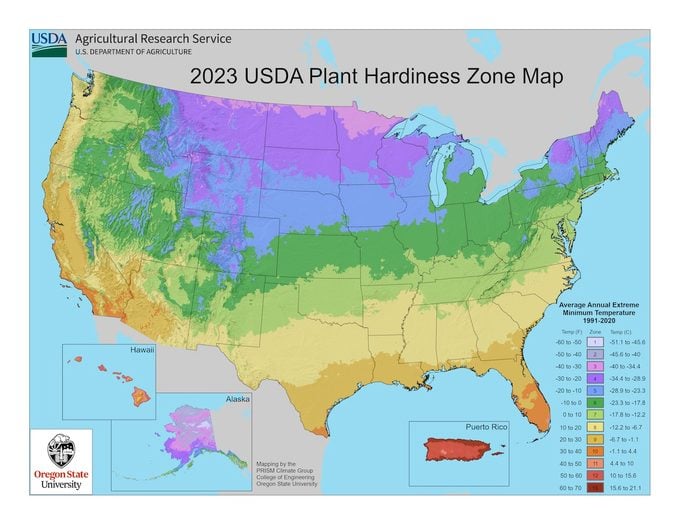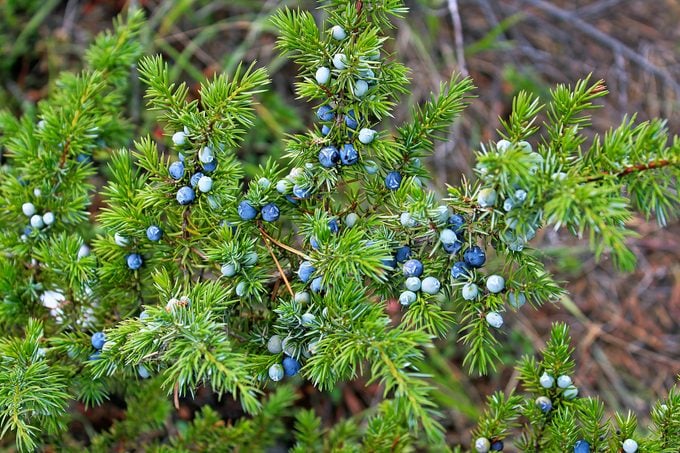USDA Updates Plant Hardiness Zone Map
Updated: Nov. 21, 2023
For the first time in more than a decade, the USDA has updated its plant hardiness zone map. Here's how to find your new planting zone.
On This Page
Did Your Plant Hardiness Zone Change?

In 2023, the USDA modified its Plant Hardiness Zone Map for the first time in 11 years. As a result of incorporating temperature data from more locations and a more recent time period , certain growing zones have shifted. Some regions of the country have increased by half a zone (for example, from Zone 6A to Zone 6B, or 5B to 6A), while others have not.
“The new USDA Plant Hardiness Zone Map provides greater insight into the average minimum winter temperatures across the country,” says horticultural expert Melinda Myers. “As in the past, it does not reflect the extreme cold temperatures outside this average that can occasionally occur. Use the Plant Hardiness Zone Map information along with your region’s summer heat, average rainfall, soil type, sunlight and wind when selecting the best plants for your gardens and landscapes.”
Learn how to find the first and last frost dates in your region.
Find Your New Plant Hardiness Zone
As Melinda advises, take a look at the USDA’s revised Plant Hardiness Zone Map online. Identify your location, enter your zip code, match the color in your region with the key next to the map, and voila: that’s your number. You may want to choose plants that are one zone hardier than your region, just for a bit of added cold-snap insurance. (If you’re in Canada, you can find your Plant Hardiness Zone Map here.)
Each of the 13 zones represents a 10-degree Fahrenheit band of minimum winter temperatures. Those areas are then subdivided into 5-degree segments (that’s why you may see “a” or “b”) to more precisely represent that area within each section. You’ll also notice that the lower the number, the colder the winter temperatures.
As you look at the map, you may notice islands of warmer or colder plant zones within the band of another. Large bodies of water, urban heat islands (urban areas are warmer than rural areas because of human activity), mountains and valleys influence the surrounding climates and growing conditions. These microclimates also exist within your landscape. Sheltered areas may allow you to grow less-hardy plants, while more-exposed areas require tougher specimens.
Follow Melinda’s tips for making the most of gardening zone.
Why Do Plant Hardiness Zones Matter?

When you’re at the garden center or shopping from an online nursery, a plant’s zone is always clearly marked on the plant tag (above), seed packet or online profile (the exception is annual plants, which only typically live for one growing season). These hardiness zones reflect the average minimum cold temperatures for a region and tell you whether the plant will survive the winter in your backyard. If your hardiness zone is within the listed range, the plant has passed the first test for growing success.
For example, my Wisconsin home is in Zone 5b, where the average minimum winter temperature range is -15 to -10 degrees Fahrenheit. Although the temperatures rarely get that cold (and in some years it may be even colder), it’s crucial that I buy plants that tolerate deep winter chills. When you push the limits of your zone, as many gardeners do, you risk failure when temperatures drop below the limits that a plant can endure.
Learn more about winter dormancy and chilling for plants.
Choose the Right Plants for the Right Place

Now you know that you’ll have the most success with the least effort when you grow plants that perform well in your specific hardiness zone. For absolute success, take it one step further. Think about choosing the right plant for the right place. Make sure the plants you choose are suited to all the growing conditions in your landscape.
Once again, check the tag, seed packet or online plant profile to know for a fact that your selection will receive the sunlight, soil type and moisture it needs to thrive. Then make sure there is sufficient space for it to reach full size; it’s amazing how fast those little plants at the garden center grow into large specimens.
It’s also a good idea to find a native plant society in your area or connect with your local extension office. Master gardeners and native plant experts can recommend options that will flourish in your plant zone and growing conditions.
All these factors together will lead to a healthy, thriving and beautiful backyard.
Next, learn how to prepare and prune roses for winter.




















